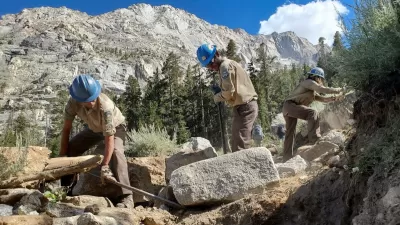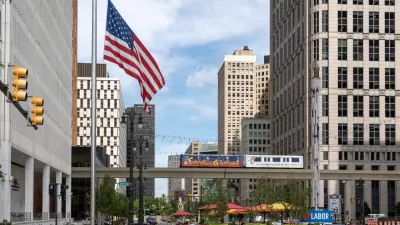The Saudi Arabian economy is still prospering, and development is booming. This piece looks at the Kingdom as an opportunity for developers and planners looking for work in tough times.
"The excitement is that, as one booming economy after another crumbles into dust, this is a land of opportunity. So, is it time for companies to revisit this overlooked market to see if the potential rewards outweigh that initial apprehension?"
"The even better news is that the Saudis have big plans – and the cash to see them through. Paul Williams, the director of trade and investment at the British embassy, says the government has $400bn in the bank waiting to be spent on construction projects over the next five years, and about $1 trillion worth of projects in the pipeline. And this money is not going to be squandered on speculative development. Unlike the UAE and Qatar, which rely on huge expat populations to create a market, Saudi Arabia is building for its own population. There are 27 million people living there, out of which 21 million are Saudi nationals, and the population is projected to double in the next 30 years."
"To support this explosion, the government will need to create homes, universities, schools, and infrastructure. It plans to do this by building six "economic cities" worth £69bn, complete with housing, education and employment opportunities. Four of these have already started on site, including the flagship, King Abdullah economic city near Jeddah, which will be the size of Washington DC. The plans also include 2,000 schools, eight universities and 28 power stations and desalination plants. Work has also started on a financial district in Riyadh."
FULL STORY: Make a wish: can Saudi Arabia make your dreams come true?

Study: Maui’s Plan to Convert Vacation Rentals to Long-Term Housing Could Cause Nearly $1 Billion Economic Loss
The plan would reduce visitor accommodation by 25,% resulting in 1,900 jobs lost.

North Texas Transit Leaders Tout Benefits of TOD for Growing Region
At a summit focused on transit-oriented development, policymakers discussed how North Texas’ expanded light rail system can serve as a tool for economic growth.

Why Should We Subsidize Public Transportation?
Many public transit agencies face financial stress due to rising costs, declining fare revenue, and declining subsidies. Transit advocates must provide a strong business case for increasing public transit funding.

How to Make US Trains Faster
Changes to boarding platforms and a switch to electric trains could improve U.S. passenger rail service without the added cost of high-speed rail.

Columbia’s Revitalized ‘Loop’ Is a Hub for Local Entrepreneurs
A focus on small businesses is helping a commercial corridor in Columbia, Missouri thrive.

Invasive Insect Threatens Minnesota’s Ash Forests
The Emerald Ash Borer is a rapidly spreading invasive pest threatening Minnesota’s ash trees, and homeowners are encouraged to plant diverse replacement species, avoid moving ash firewood, and monitor for signs of infestation.
Urban Design for Planners 1: Software Tools
This six-course series explores essential urban design concepts using open source software and equips planners with the tools they need to participate fully in the urban design process.
Planning for Universal Design
Learn the tools for implementing Universal Design in planning regulations.
Ascent Environmental
Borough of Carlisle
Institute for Housing and Urban Development Studies (IHS)
City of Grandview
Harvard GSD Executive Education
Toledo-Lucas County Plan Commissions
Salt Lake City
NYU Wagner Graduate School of Public Service





























